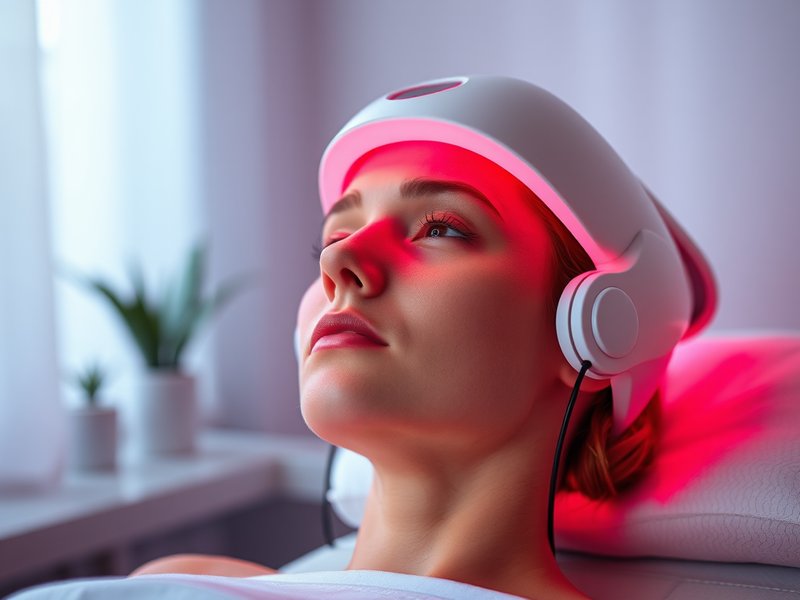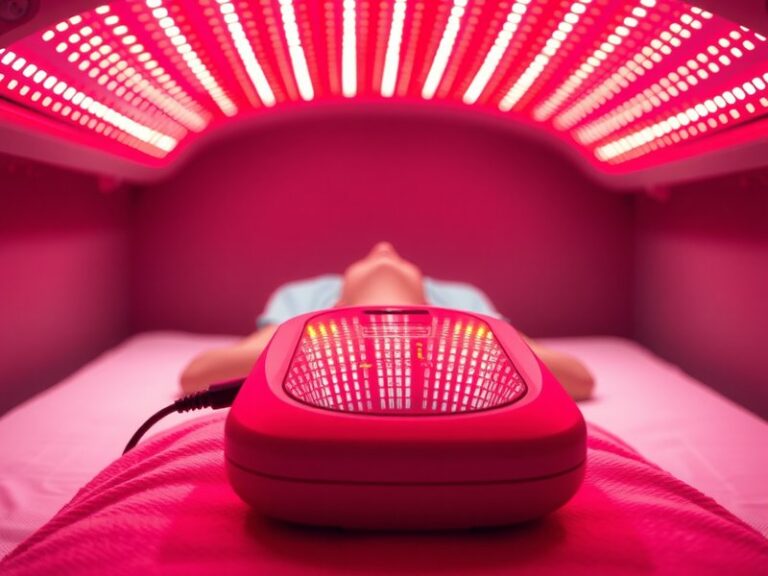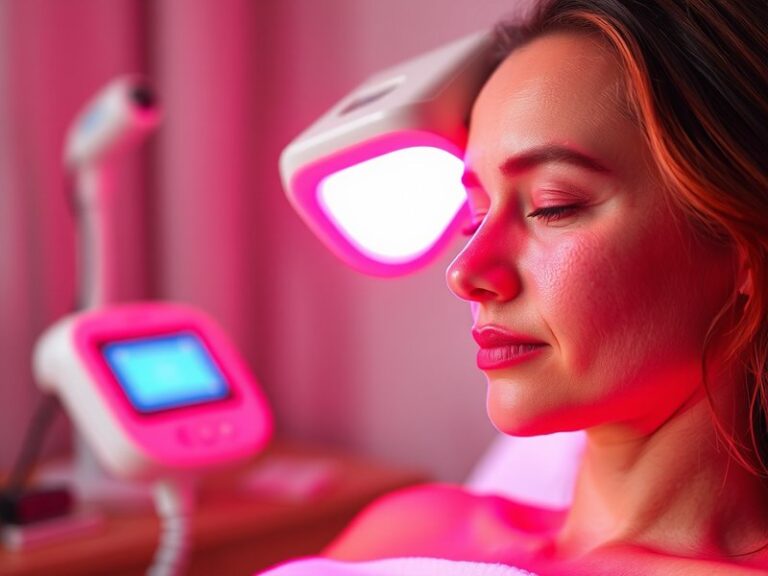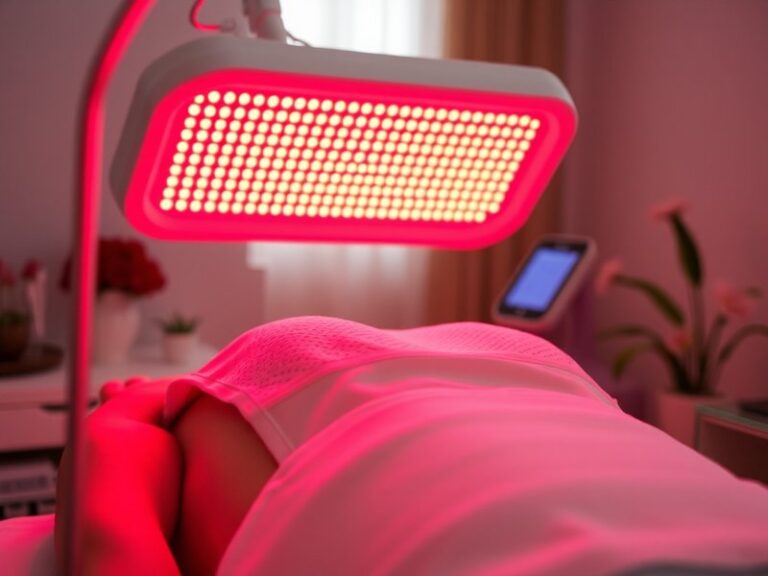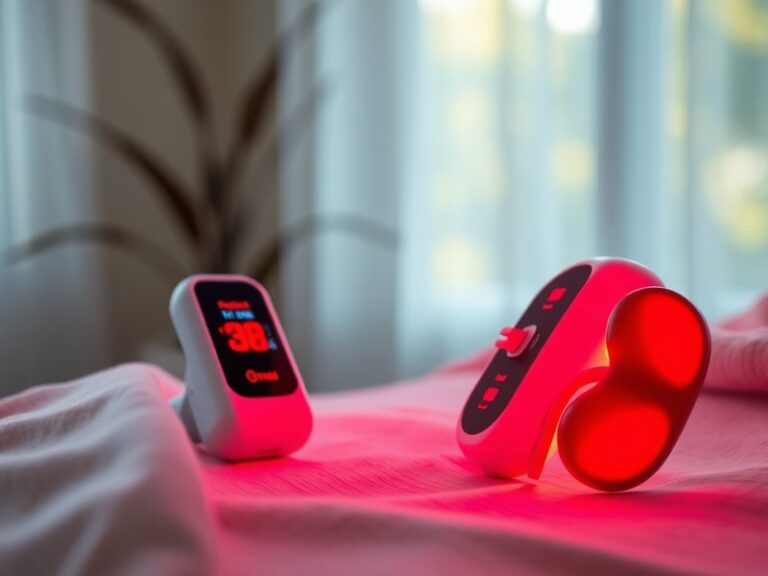Is Red Light Therapy Good For Trigeminal Neuralgia?
Is Red Light Therapy Good for Trigeminal Neuralgia?
Is there a natural remedy to ease the debilitating pain of trigeminal neuralgia?
This article delves into red light therapy and its potential benefits for individuals suffering from trigeminal neuralgia (TN). We will explore how this form of therapy may alleviate symptoms, its advantages and disadvantages, and alternatives to consider for managing this challenging condition.
Key Takeaways
- Red light therapy shows promise in reducing inflammation and pain associated with trigeminal neuralgia.
- It is a non-invasive treatment option that may complement traditional therapies.
- Consulting healthcare professionals is essential before beginning any new treatment regimen.
What is Red Light Therapy?
Red light therapy (RLT), also known as low-level laser therapy (LLLT), uses specific wavelengths of light—primarily in the red and near-infrared spectrum—to promote healing and reduce inflammation. This therapy is based on the principle that certain light wavelengths can penetrate the skin and stimulate cellular processes, enhancing tissue repair and reducing pain.
Check out our analysis “Can Red Light Help Knee Pain?”
This therapy has been employed in various medical fields, such as dermatology for skin issues and physical therapy for musculoskeletal pain relief. Its application for neurological conditions, including trigeminal neuralgia, is an emerging area of interest.
What are the Benefits of Red Light Therapy?
Introducing red light therapy has several potential benefits specifically for individuals dealing with trigeminal neuralgia.
Pain Reduction
Numerous studies suggest that red light therapy can effectively reduce pain levels. By promoting better circulation and decreasing inflammation, patients may experience a significant reduction in the stabbing or electrical shock-like pain characteristic of TN.
Improved Healing
Red light therapy accelerates tissue repair by stimulating collagen production and enhancing cellular metabolism. This can be particularly beneficial in reducing chronic inflammation associated with trigeminal neuralgia, potentially leading to long-lasting relief.
Non-Invasiveness
One of the key advantages of red light therapy is that it is a non-invasive treatment option. Unlike surgical interventions or injectable medications, RLT can be performed in a clinical setting or at home, making it accessible to many patients.
Minimal Side Effects
RLT is generally deemed safe, with few side effects. Patients may experience slight warmth or redness in the treated area, but serious adverse effects are uncommon. This makes it a low-risk option compared to more invasive treatments.
Is it Possible to Use Red Light Therapy for Trigeminal Neuralgia?
Yes, it is possible to use red light therapy as a treatment for trigeminal neuralgia. However, it’s critical to ensure proper application and adherence to recommended protocols. Patients should discuss this therapy with their healthcare provider to tailor it to their specific needs.
What are the Advantages of Using Red Light Therapy?
Utilizing red light therapy has several advantages that can positively impact TN management.
Convenience and Accessibility
Patients can often access red light therapy equipment for home use, allowing them to incorporate it into their daily routine easily. This flexibility can lead to more consistent treatment and better outcomes.
Complementary Treatment
RLT can be used alongside other treatment modalities, such as medications or physical therapy, enhancing overall pain management strategies. This integrative approach can create a more holistic path to relief.
Evidence of Efficacy
Emerging research highlights red light therapy’s potential effectiveness in treating various pain conditions, including trigeminal neuralgia, giving patients hope for a viable alternative to traditional treatments.
Read the thorough analysis Can Red Light Therapy Lighten Skin?
What are the Disadvantages of Using Red Light Therapy?
Despite its benefits, there are notable disadvantages and limitations to consider when opting for red light therapy.
Limited Research
While initial studies and anecdotal evidence are promising, more robust clinical trials are needed to establish its efficacy specifically for trigeminal neuralgia. Patients should remain cautious and not rely solely on RLT for treatment.
Cost of Equipment
Home-use devices for red light therapy can be expensive. While they may save on clinic visits, the initial investment might be a barrier for some patients.
Temporary Relief
Some patients may find that while red light therapy provides temporary relief, it might not address underlying causes of trigeminal neuralgia. Therefore, it’s crucial to use this therapy as part of a broader pain management plan.
What are the Things to Consider Before Using Red Light Therapy?
Before starting red light therapy, several factors need to be evaluated to ensure safety and efficacy.
Consult with Healthcare Providers
Always discuss any new therapy with a healthcare professional, particularly for chronic conditions like trigeminal neuralgia. They can offer guidance based on your medical history and individual needs.
Technology and Quality
Ensure the red light therapy device you choose is of high quality and designed for therapeutic purposes. Lower-quality devices may not deliver adequate light intensity or wavelength, resulting in ineffective treatment.
Treatment Frequency and Duration
Understanding the recommended frequency and duration of treatments is essential. Following the manufacturer’s guidelines or professional recommendations can help maximize the benefits of therapy.
What are the Alternatives to Red Light Therapy?
If red light therapy isn’t suitable or effective, various alternatives exist for managing trigeminal neuralgia.
Medication
Prescription medications, such as anticonvulsants and muscle relaxants, are commonly used to manage TN symptoms. While they can be effective, they may come with side effects and require careful monitoring.
Surgery
In severe cases, surgical options such as microvascular decompression or rhizotomy may be considered. These procedures aim to relieve pressure on the trigeminal nerve or reduce its ability to transmit pain.
Physical therapy
Physical therapy may also help through exercises designed to improve function and reduce pain. Techniques like manual therapy and exercises can strengthen the jaw and neck, providing symptomatic relief.
Conclusion: Is it Recommended to Use Red Light Therapy?
Red light therapy offers a promising avenue for alleviating the pain associated with trigeminal neuralgia. While benefits such as pain reduction and improved healing are significant, it is essential to consider possible limitations and consult healthcare professionals before starting treatment. As holistic pain management often requires a multifaceted approach, combining RLT with traditional therapies may enhance overall outcomes.
Frequently Asked Questions
Can red light therapy cure trigeminal neuralgia?
While red light therapy may reduce pain and inflammation associated with trigeminal neuralgia, it is not a cure. It should be seen as part of a broader treatment plan.
How often should I use red light therapy for TN?
Usage frequency can vary. Following the manufacturer’s guidelines or consulting with a healthcare provider can help determine the optimal frequency based on individual needs.
Is red light therapy safe for everyone?
Generally, red light therapy is safe for most individuals. However, those with specific sensitivities or conditions should consult a healthcare provider before use.
Can I perform red light therapy at home?
Yes, there are many devices available for home use. However, it’s crucial to choose quality equipment and follow proper usage guidelines for effectiveness.
What should I expect during a red light therapy session?
Most individuals experience a pleasant warmth during the session. The duration may vary depending on the device and the treatment area. Consistency is key for potential benefits.
